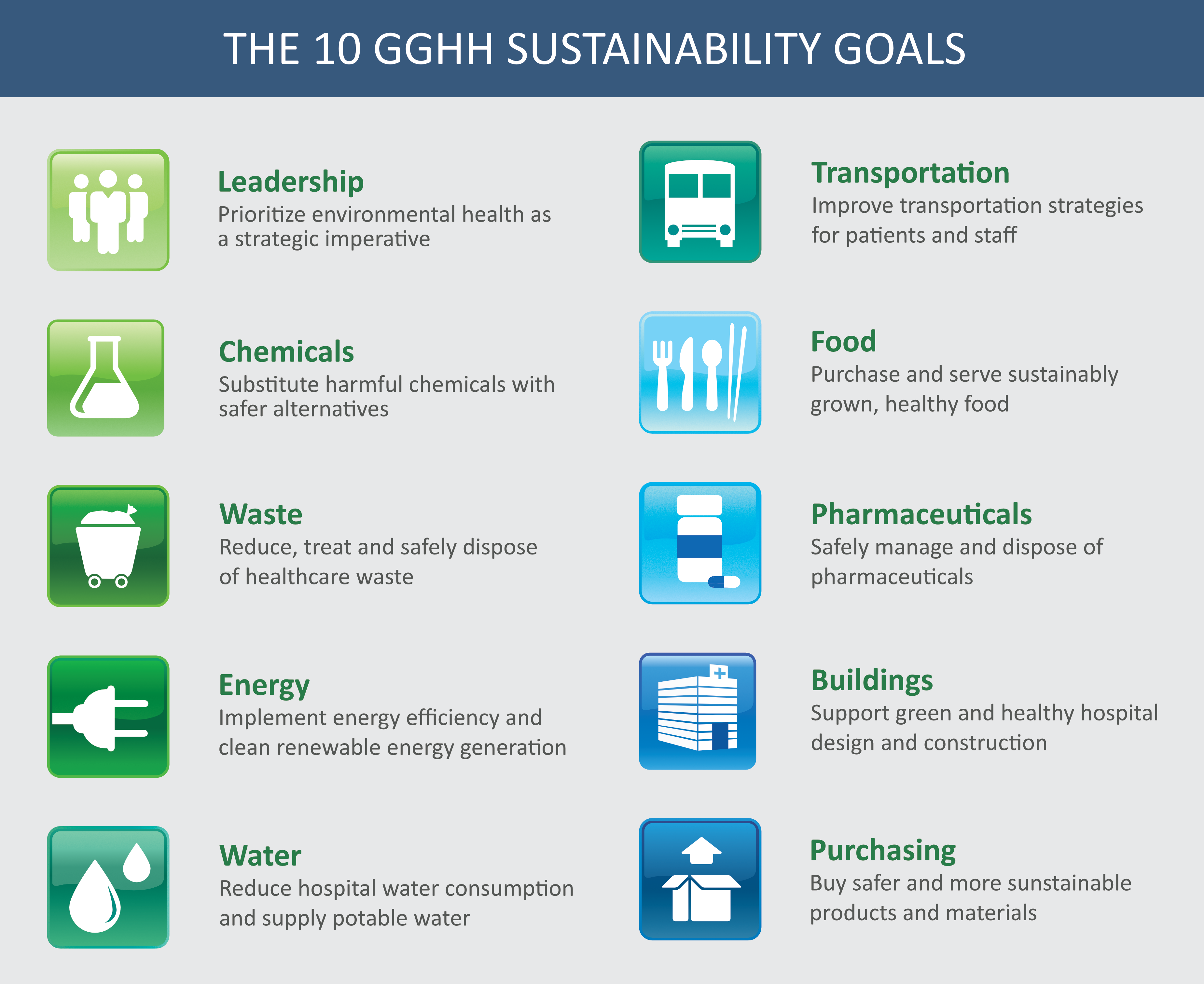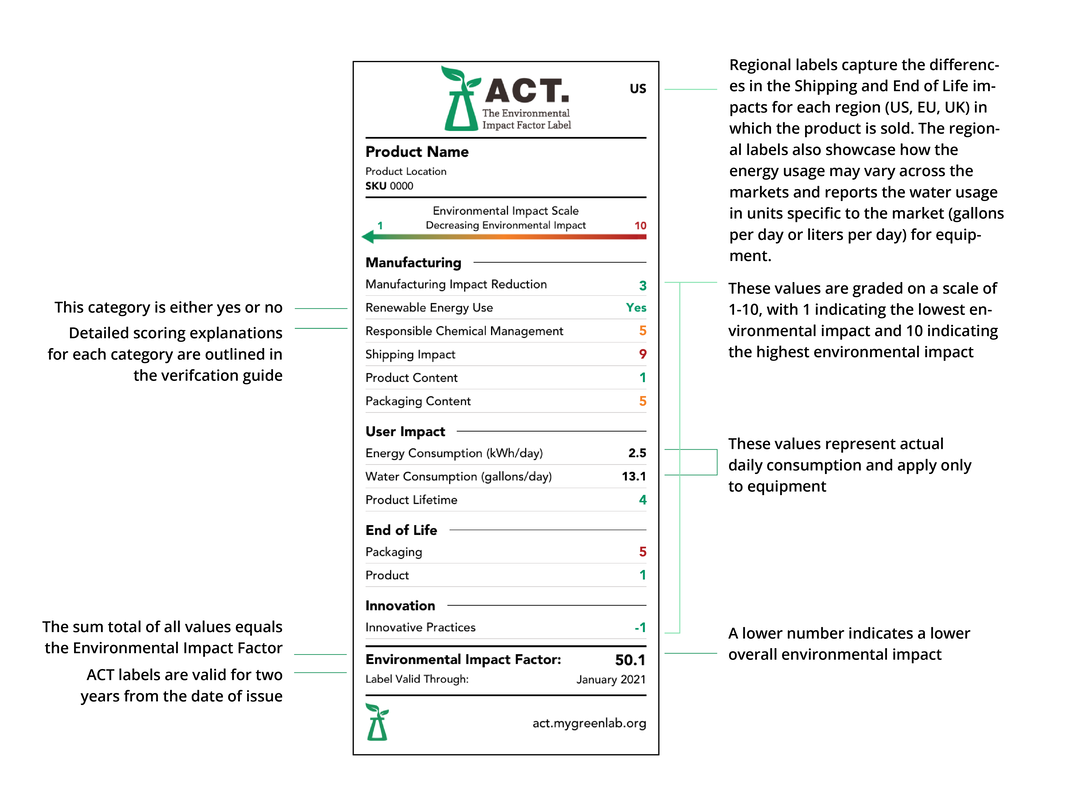The health sector must become greener
Worldwide, the health sector is struggling with the consequences of global warming, but fatally is itself responsible for a significant proportion of greenhouse gas emissions. Studies show that hospitals and rehabilitation clinics in particular have great potential for reducing these emissions and, like the manufacturing industry, need to fundamentally revise established processes.
 The international, non-profit organisation Health Care Without Harm (HCWH) has been supporting the transformation of the health sector towards more sustainability since 1996. © HCWH
The international, non-profit organisation Health Care Without Harm (HCWH) has been supporting the transformation of the health sector towards more sustainability since 1996. © HCWHIn its report on the ecological footprint of the health sector, published in late 2019, the non-governmental organisation Health Care Without Harm (HCWH) came to a shocking conclusion: the healthcare industry is responsible for 4.4 percent of global greenhouse gas emissions.1) This corresponds to two gigatonnes of CO2 and is equivalent to the annual greenhouse gas emissions of 514 coal-fired power plants. This puts the health sector ahead of aviation. EU countries occupy third place after the USA and China; together, the top three emitters cause more than half of the world’s harmful emissions in this sector. Germany's contribution, with per capita emissions of 0.71 tonnes of CO2, is 2.5 times higher than the global average of 0.28 tonnes and also significantly exceeds that of the EU (0.49 tonnes). The German healthcare industry’s share of total national emissions is thus as high as 5.2 percent.
The unprecedented study, based on 2014 WIOD (World Input-Output Database) data, sent shock waves through the global health sector, revealing that it is a major contributor to the problem of climate change that affects it acutely. The health sector is currently facing two challenges: on the one hand, it has to cope with the increasing health problems caused by global warming, such as cardiovascular and infectious diseases as well as malnutrition. On the other hand, it must be environmentally responsible. This requires reducing energy-related CO2 emissions and water consumption, avoiding waste and using resource-saving materials.
The European Green Deal
All these measures are part of the European Green Deal. The concept presented by the European Commission in late 2019 aims to reduce the net emission of all greenhouse gases in the European Union to zero by 2050 and thus become the first continent to become climate neutral. In addition to CO2, this includes methane (CH4), nitrous oxide (N2O) as well as hydrofluorocarbons, perfluorocarbons and sulphur hexafluoride (SF6). The ambitious plan is intended to make a significant contribution to meeting the 2015 Paris Climate Agreement target: limiting global warming to well below 2 °C, if possible even below 1.5 °C compared to the pre-industrial era.2) An important milestone on the way is the intention of the 27 EU member states to reduce greenhouse gas emissions by 55 percent by 2030 compared to the 1990 level.
The goals of the Green Deal were made binding in the European Climate Change Act in 2021 and require a transformation of all economic sectors as well as a rethink at various levels. Climate neutrality in combination with increased environmental protection and a resource-saving circular economy should lead to more sustainability, creating not only better and healthier living conditions, but also sustainable jobs with fair conditions.
The German healthcare industry employs around 7.4 million people and makes a significant contribution to the gross domestic product with a 12.1 percent share (as of 2020).3) The majority of the gross value added is generated by inpatient and outpatient healthcare providers, health insurance companies and pharmacies in the service-oriented sector. The industrial sector, i.e., the production and trade of medical products, drugs and medical devices, along with research and development, generates about one fifth of the gross value added. How can the various players in the healthcare industry contribute to the Green Deal?
Great savings potential in clinical operations
Huge amounts of energy and water are used in hospitals to maintain high standards of hygiene in patient care and clinical operations. The average water consumption in German hospitals per bed per day is 300 to 600 litres, which is three times that of residential buildings.4) Furthermore, one bed requires as much energy annually as four new single-family homes.5) However, where consumption is high, the potential for savings is also high. Viamedica Stiftung – Foundation for a Healthy Medicine, has therefore set itself the task of systematically implementing environmental protection in medicine. The Klinergie 2020 campaign, for example, informs hospitals about possible energy savings potentials. Often, 30 to 40 percent of energy costs can be saved through carrying out an energy potential analysis and introducing tailored measures.6)
Green in all areas
 ”Green hospitals” are sustainably active in 10 areas. © HCWH and R. Menßen-Franz
”Green hospitals” are sustainably active in 10 areas. © HCWH and R. Menßen-FranzOn an international level, HCWH initiated the Global Green and Healthy Hospitals project back in 2011, which brings together healthcare professionals worldwide and has set itself ten goals for the health sector to address and promote greater sustainability and environmental health.7) In addition to the reduction of water and energy consumption and waste generation, other targets to achieve include sustainable catering for patients and employees, substitution of toxic chemicals, safety of medicines, improved mobility strategies and the purchase of sustainable products. Havelhöhe Community Hospital in Berlin is participating in the project and taking a pioneering role in Germany, aiming to become the first zero-emission hospital in Germany by 2030.8)
Other hospitals are increasingly committed to sustainability and are focussing on different issues, as the following examples show: since 2013, the University Hospital of Dresden has completely switched off the room air conditioning (RLT) systems in operating theatres at non-operational times, thus saving about 1,000 kWh per operating theatre per year.9 ) The Department of Anaesthesiology at Kliniken des Landkreises Karlsruhe showed that replacing the anaesthetic gas desflurane, whose greenhouse effect is 2,500 times higher than CO2, with the less harmful sevoflurane reduced the total emissions of the anaesthesia department by more than two thirds.10) In Essen, the University Medical Centre is carrying out a variety of projects and addresses the issue of sustainability in hospitals in a book entitled "Green Hospital", published in May 2022.11)
In addition to reducing electricity and water consumption, another important issue is avoiding waste. Sterile disposable products are essential in areas such as wound care, but there are already some alternative options for use in operating theatres available. In 2014, about one third of hospitals used disposable instruments, resulting in about 8,000 tonnes of waste.12) Increasing quantities of disposable instruments are being used as, at first glance, disposable products seem more economical than reusable ones. This is because the required processes for cleaning and sterilising are time-consuming and labour-intensive. On closer analysis, however, this is often not the case. In addition, reusable stainless-steel instruments also save precious resources such as chromium. A study by the Ludwig Fresenius Center for Health Care Management and Regulation at the HHL Leipzig Graduate School of Management showed that in some cases even the multiple use of single-use products is possible, which reduces costs enormously.13) A lot of waste can be avoided, for example, by using reusable kidney dishes, wash bowls or medicine cups for inpatient treatment.
The basis for an efficient strategy is calculating one's own emissions and identifying the various sources. This is the starting point for Heidelberg University Hospital, which is creating a greenhouse gas calculator for hospitals in a project called KliOL (Climate Protection in Hospitals through Optimisation of Supply Chains). The project encompasses the scope 3 area in addition to directly released emissions (scope 1) and indirect emissions from purchased energy (scope 2). This includes all other indirect emissions that occur along the value chain and account for about 70 percent of all emissions in healthcare facilities.1) The manufacturers of medicinal products and medical devices thus have a decisive role to play.
Considering the fact that there are about 1,900 hospitals14) and 1,100 preventive care and rehabilitation facilities in Germany15), these projects are only a start. Since the introduction of the Corporate Sustainability Reporting Directive (CSRD), hospitals will also have to prepare an annual sustainability report in future (probably from 2024 onwards)16), the topic will become increasingly present in the healthcare industry, and sustainable criteria will come more into focus when purchasing products and services.
Manufacturers show initiative
The manufacturers of medical devices and laboratory articles are therefore now engaged in a rethink. In late 2021, the German Medical Technology Association (BVMed), which represents the interests of more than 220 German and international companies in the sector, established the Environment and Sustainability Unit (FBUN). This will address the issues of sustainability, chemistry, sterilisation, plastics and packaging as well as waste and disposal in five working groups. However, when it comes to medical devices the switch to sustainable materials is associated with difficulties.17) Each change requires a new certification to ensure that criteria such as biocompatibility, sterility and stability to thermal and mechanical stresses continue to be met. In the long term, however, sustainable action offers companies some advantages: by improving their image, they can obtain funding more easily, become more attractive to applicants and save costs through recycling and reducing energy consumption.
Under the umbrella of Chemie3, the German Chemical Industry Association (VCI), the German Mine, Chemical and Energy Workers' Union (IGBCE) and the German Chemical Employers' Federation (BAVC) have been working towards sustainability in the chemical and pharmaceutical industry since 2013. The Chemie3 guide "SDG navigator for companies in the chemical industry" explains how companies can contribute to achieving the UN’s Sustainable Development Goals (SDGs). Furthermore, the initiative is currently developing an industry standard for sustainable value creation that provides practical tools and assistance for companies seeking to comply with the German Supply Chain Due Diligence Act (LkSG).18) The Act on Corporate Due Diligence to Prevent Human Rights Violations in Supply Chains will come into force on 1st January 2023 and affects all companies with over 1,000 employees.
Many well-known pharmaceutical companies now use renewable energies and pay attention to the careful use of resources.19) Universities such as Freiburg and Mainz already promote sustainability awareness on pharmacy courses, and the Federal Association of Pharmacy Students in Germany (BPhD) recently founded the Environment and Climate working group.20) The emergence of climate-neutral pharmacies is supported by the NOVENTI group of companies under the auspices of the Federal Ministry for Economic Cooperation and Development.21)
Sustainable laboratory operations
 The ACT label is a sustainability certificate for laboratory products. © My Green Lab
The ACT label is a sustainability certificate for laboratory products. © My Green LabMost of the points mentioned so far also apply to laboratory operations, both in diagnostics and research. Many samples have to be stored between -20 and -80 °C, a wide variety of equipment is used, sterile work is ensured by ventilation systems and autoclaving processes, and laboratory water requires increased purity. All of this consumes a lot of energy.22) Furthermore, the examinations consume large quantities of single-use plastic products; one 2014 study estimated the global plastic waste at 5.5 million tonnes. The sustainability consultancy, NIUB, is among the organisations that offer professional support for the systematic recording of consumption, identification of opportunities for change and successful implementation.
More and more manufacturers are also informing users about more sustainable operations/products. The independent, non-profit organisation MY Green Lab’s ACT label, which has been available in the EU since 2018, facilitates the search for sustainable labware. It evaluates the environmental impact of labware in the areas of production, use, disposal and packaging and creates an Environmental Impact Factor, a kind of sustainability certificate, for each product. Reuse or recycling is difficult for many utensils because of contamination with sample material. The cross-laboratory use of equipment, rooms and chemical stocks can also have a major impact.
A new awareness is currently emerging at all levels and in every sector: climate protection is health protection and only by working together can sustainable effects be achieved.